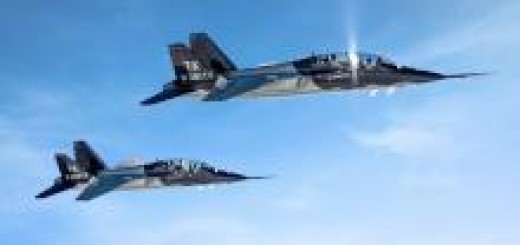UK delays Watchkeeper drone retirement as Corvus program advances
The United Kingdom will keep its Watchkeeper WK450 drones in service until at least March 2027, two years later than originally planned, as the Ministry of Defence (MoD) moves forward with the procurement of a new tactical unmanned aerial system under the Corvus program.
The extension, revealed by British Defence Industry Minister Luke Pollard in a written parliamentary response first reported by the UK Defence Journal, highlights a familiar dilemma for the British military: balancing budget-driven retirements with the need to avoid capability gaps.
Delayed retirement
Appointed Defence Secretary in July 2024, John Healey announced a series of cost-cutting measures shortly after taking office, aiming to save £500 million ($671 million) over five years. The plan included the early withdrawal or sale of several assets, among them 46 British Army Watchkeeper Mark 1 drones, 14 aging Chinook heavy-lift helicopters, and 17 Puma helicopters, some of which have been flying for more than half a century.
Under Healey’s original timeline, the Watchkeeper fleet, acquired from Thales UK in 2010, was due to start retirement in March 2025. But according to Pollard, the aircraft will now remain operational until at least March 2027, overlapping with the introduction of Corvus drones, whose first deliveries are planned from 2026.
That adjustment had been foreshadowed when the MoD awarded a contract to MPI Limited for “technical support” of the Watchkeeper fleet, confirming continued sustainment work beyond the previously announced withdrawal date.
A stopgap with a long service life
Developed from the Elbit Systems Hermes 450 platform, the Watchkeeper has been the British Army’s primary tactical unmanned aerial system for more than a decade. Operated by the 47th Regiment Royal Artillery, it features a dual-mode synthetic aperture radar and a ground-mode moving target indicator, enabling 16-hour missions at altitudes of up to 15,000 feet and ranges of approximately 140 kilometers.
Although it has provided reliable intelligence, surveillance, target acquisition and reconnaissance (ISTAR) support in various theaters, the Watchkeeper has long been criticized for high operating costs, reliability issues, and limited availability; factors that contributed to the MoD’s decision to phase it out earlier than planned.
Preparing for the next generation
The MoD launched the Corvus program in 2025, a £130-million ($170-million) effort to acquire a new generation of tactical unmanned systems with 24-hour endurance, secure low-latency data sharing across coalition networks, and the ability to operate in GPS-denied or contested environments.
According to official procurement documents, the MoD began market engagement for Corvus in April 2025, setting a “stretch target” to achieve a Minimum Deployable Capability by the end of 2025. The formal tender process followed that summer, with a main contract expected to begin around May 2026 and run through 2030, with potential extensions to 2035.
That timeline means the first Corvus platforms could enter service in 2026, though full operational capability is likely to come later in the decade.
The decision to keep the Watchkeeper fleet in service through 2027 reflects a pragmatic effort to maintain continuous ISTAR capacity, and to avoid the kind of capability vacuums that followed earlier retirements, such as those of the Nimrod MRA4 maritime patrol aircraft and the Harrier GR.9 fleet in the 2010s. The post UK delays Watchkeeper drone retirement as Corvus program advances appeared first on AeroTime.
The United Kingdom will keep its Watchkeeper WK450 drones in service until at least March 2027, two years…
The post UK delays Watchkeeper drone retirement as Corvus program advances appeared first on AeroTime.





